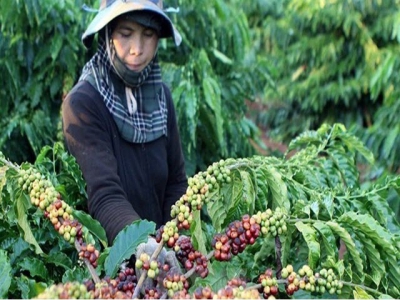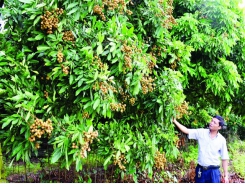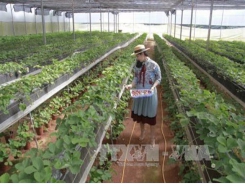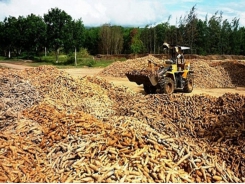Promoting high quality coffee production

The total value of coffee exports in the first six months of 2018 reached US$ 1.98 billion, down 6% on the same period last year, according to the Department of Agro-product Processing and Market Development under the Ministry of Agriculture and Rural Development.
Illustrative image (Photo: VNA)
In particular, the revenue from coffee exports is estimated at US$287 million, an annual decrease of 2.4%. For a long time, coffee export revenue has been edging to a downward trend. Coffee prices have fallen sharply due to the increased supply from major coffee producing countries such as Brazil and Colombia.
In Vietnam, before entering the new crop, the already large inventory has put a lot of pressure on sales. Not to mention that large consuming markets already have reserves of coffee, if the price of coffee in Vietnam is high, they will use their reserves or buy coffee from other countries. Vietnam is one of the largest coffee producing countries in the world, but in the global market, Vietnamese coffee is less competitive than other countries. Currently, 90% of Vietnamese coffee is exported in the raw form with a quality and value lower than many foreign rivals. Selling in this form usually reaps low profits at high risk. In fact, domestic exporters and coffee growers have been hit hard when world coffee prices have fallen.
Vietnam is the world’s second largest coffee exporter, behind only Brazil. However, the value of its coffee exports is much lower than other nations’ as the country only exports raw coffee. Besides, shortcomings in preservation and the lack of specified processed products have hindered the sector’s growth.
Minister of Agriculture and Rural Development, Nguyen Xuan Cuong, reckoned that if Vietnam's coffee sector could reorganise production in a more scientific way, based on a comprehensive application of advanced technology from processing steps to trade organisation, the sector can surely double its value by 2030.
Obviously, there is still much to be done to lift the status of country’s sector on the world’s coffee value chain, staring from the harvesting steps and preliminary processing. In order to increase the added value of Vietnamese coffee products, in addition to investment in technological innovation and a significant improvement in the processing phase, it is essential to build a product strategy, under the principle of producing according to the market’s demands, giving priority to shifting the structure of products toward the high added value segment.
Accordingly, enterprises need to examine the market’s demands in all three dimensions: market share, tastes and prices, to properly orient products, as well as determine the proportion of processing the appropriate products, in order to develop a marketing strategy which reflects the potential capacity of enterprises.
The promotion of the consumption of domestic products is a very important task, propping up exports. Relevant agencies should create favourable conditions, particularly in infrastructure and administrative procedures, to support businesses processing soluble, roasted and husked coffee, to gradually establish a processing and consumption network in the country. Managers also need to focus on improving the efficiency of trade promotion through exhibitions, fairs and activities which promote high-quality coffee and a diverse range of products.
Có thể bạn quan tâm
Phần mềm

Phối trộn thức ăn chăn nuôi

Pha dung dịch thủy canh

Định mức cho tôm ăn

Phối trộn phân bón NPK

Xác định tỷ lệ tôm sống

Chuyển đổi đơn vị phân bón

Xác định công suất sục khí

Chuyển đổi đơn vị tôm

Tính diện tích nhà kính

Tính thể tích ao hồ



 Temporary farm workers now eligible for housing
Temporary farm workers now eligible for housing  Cassava exports fall in volume as value rises
Cassava exports fall in volume as value rises